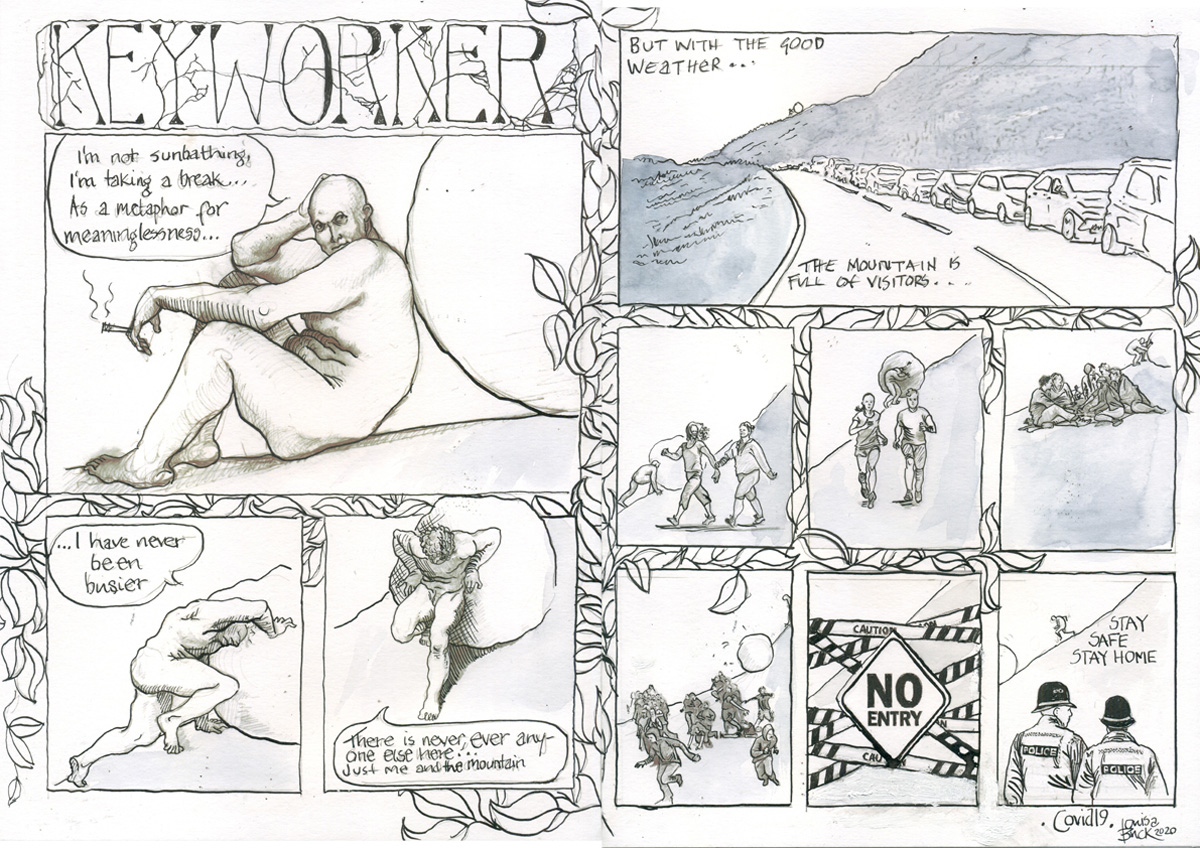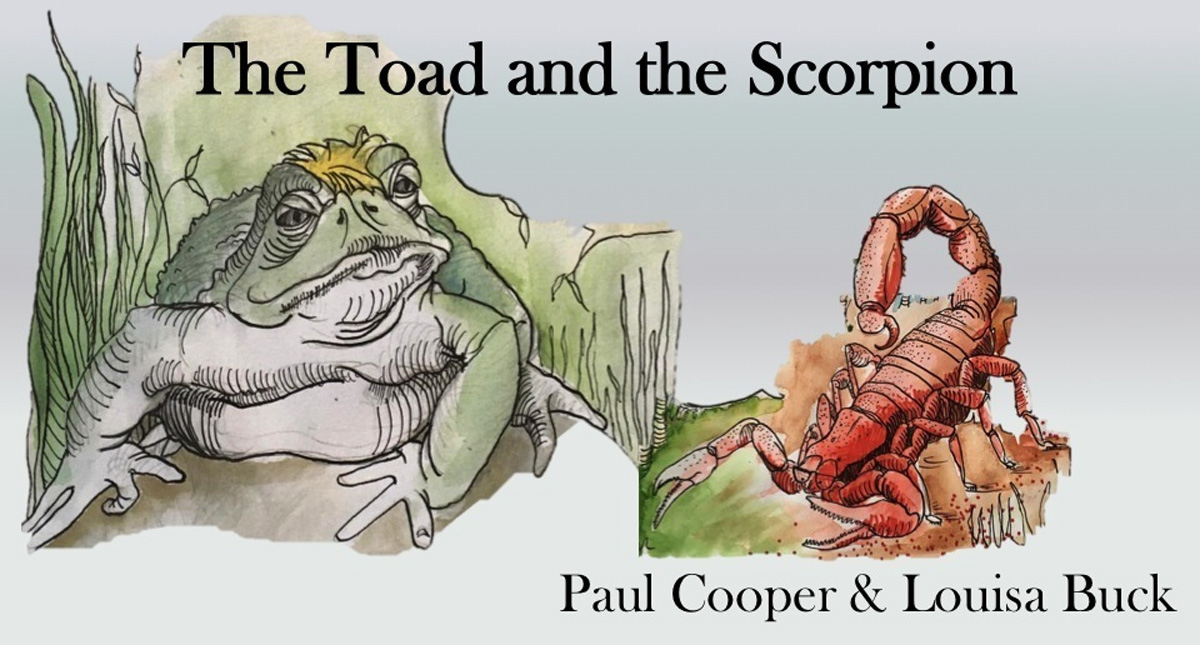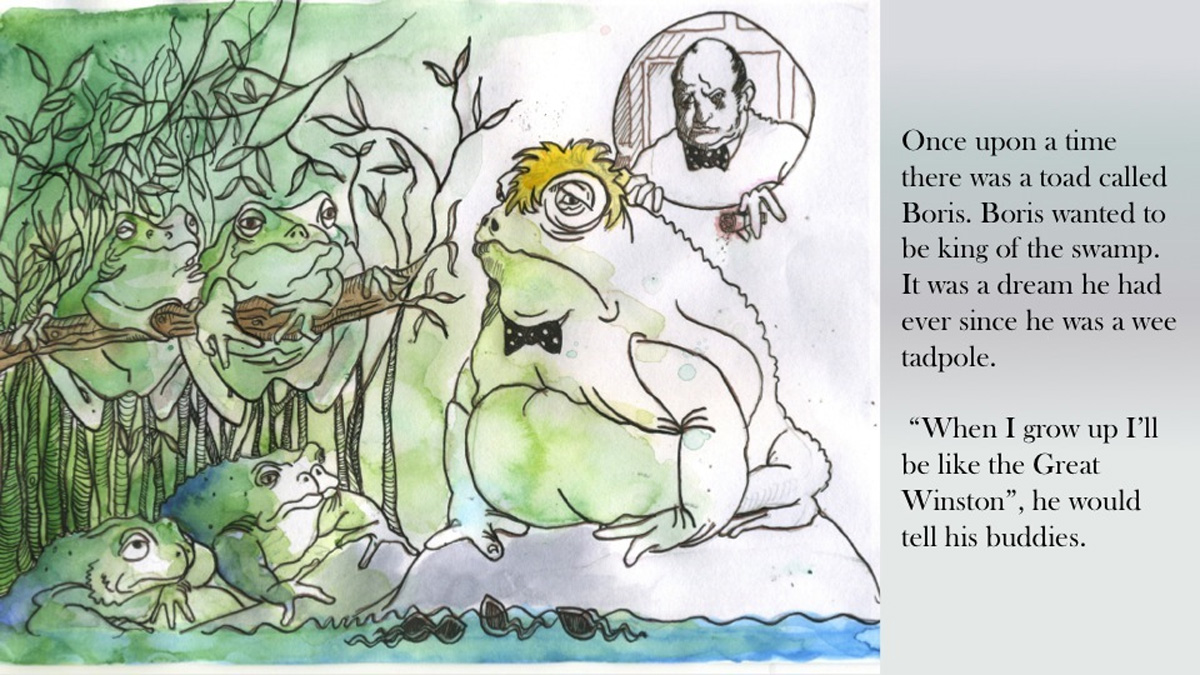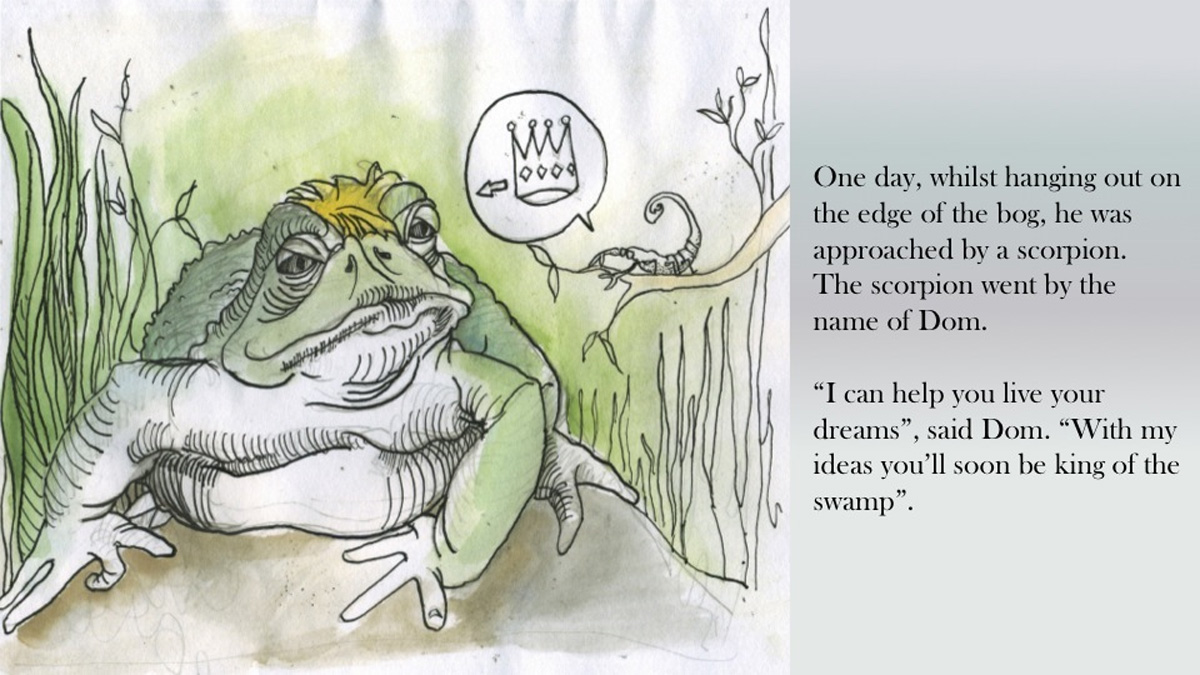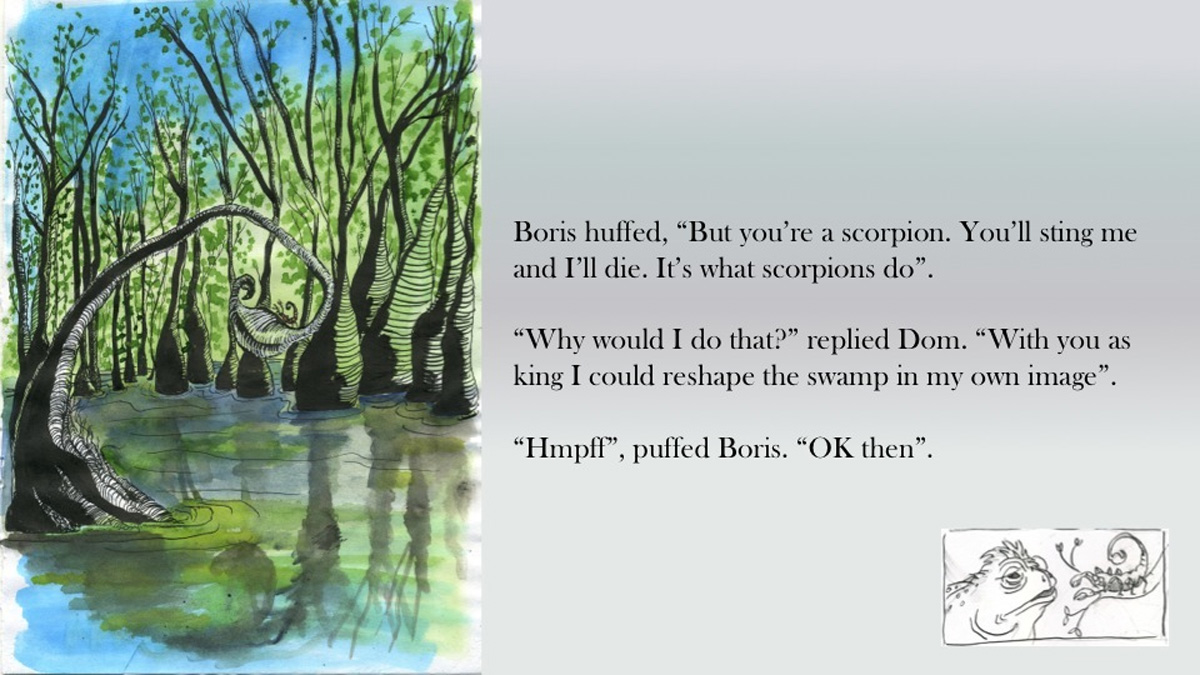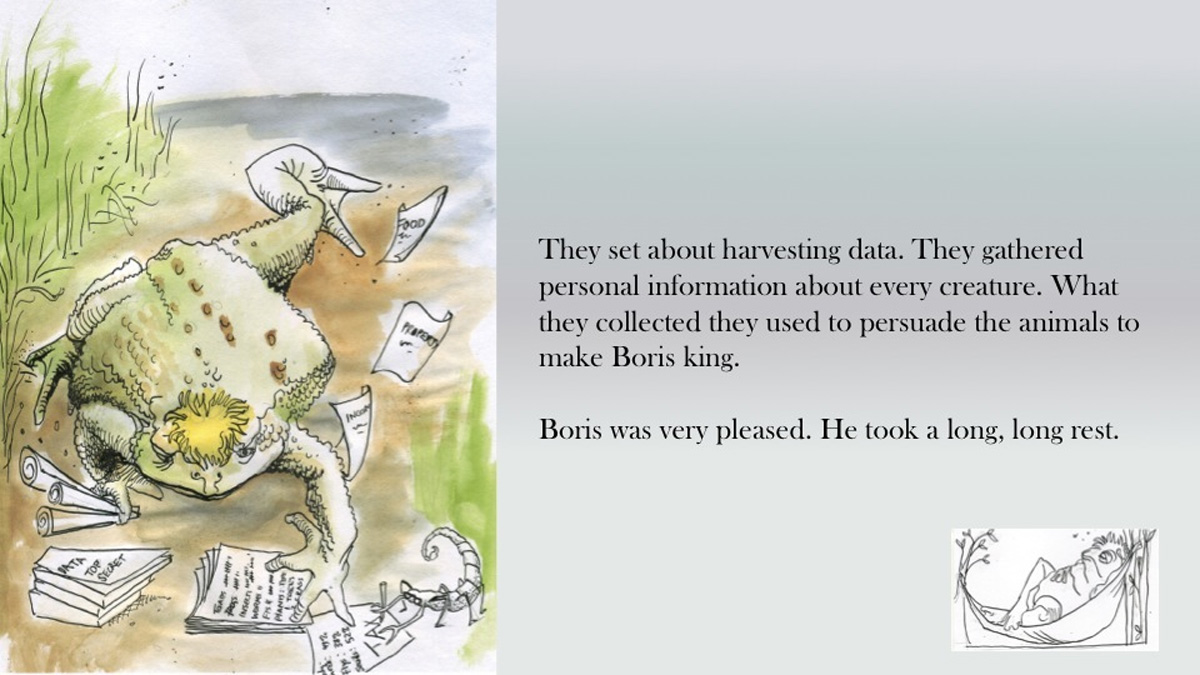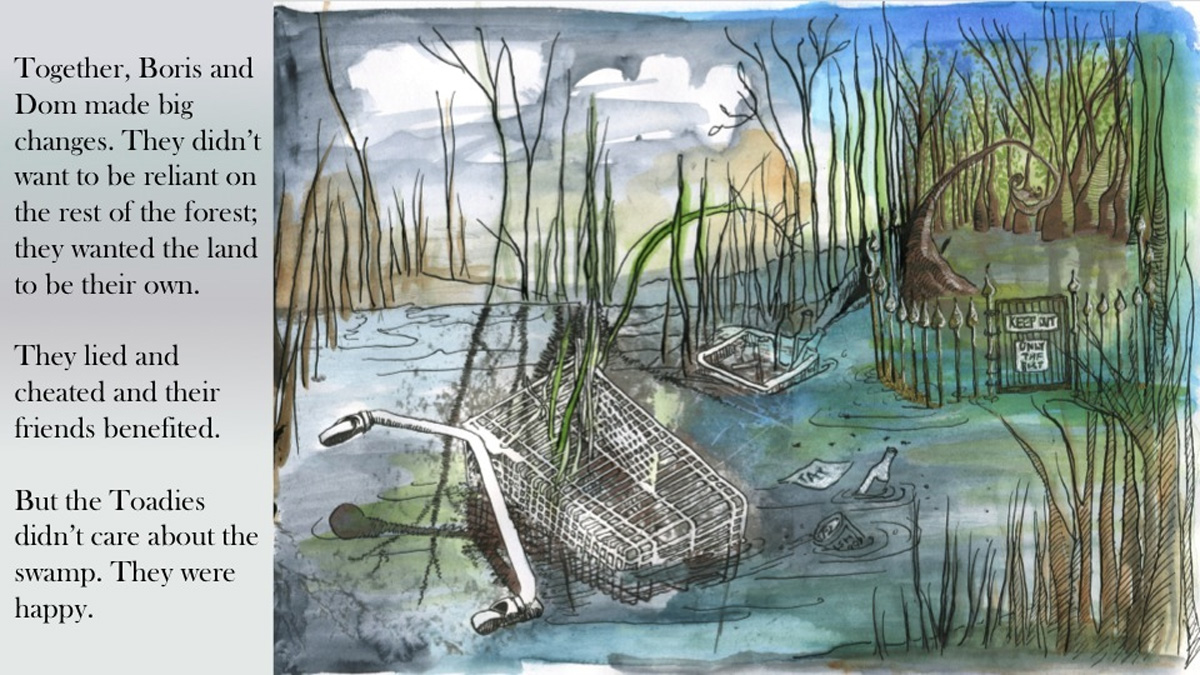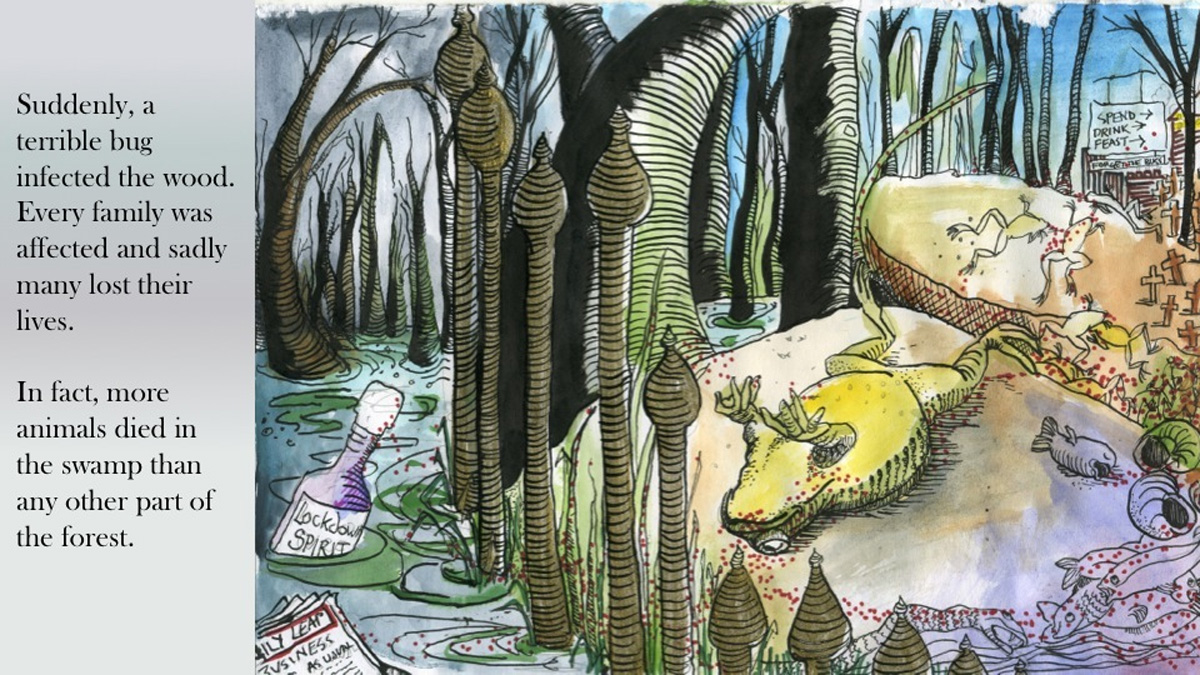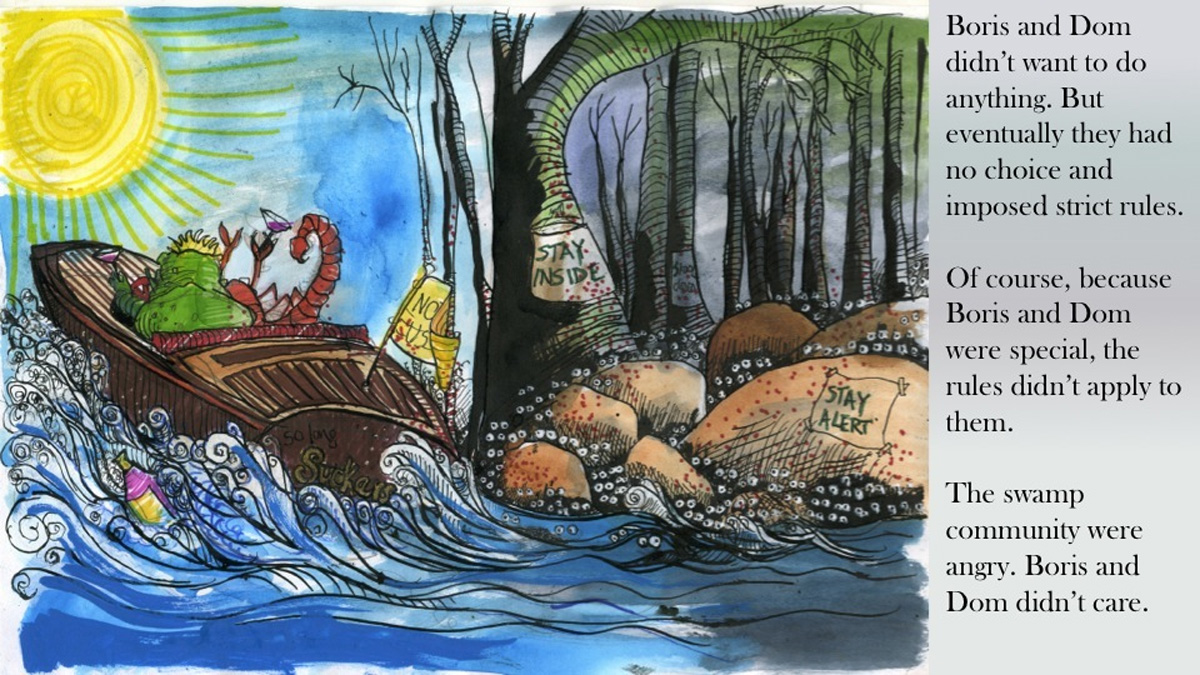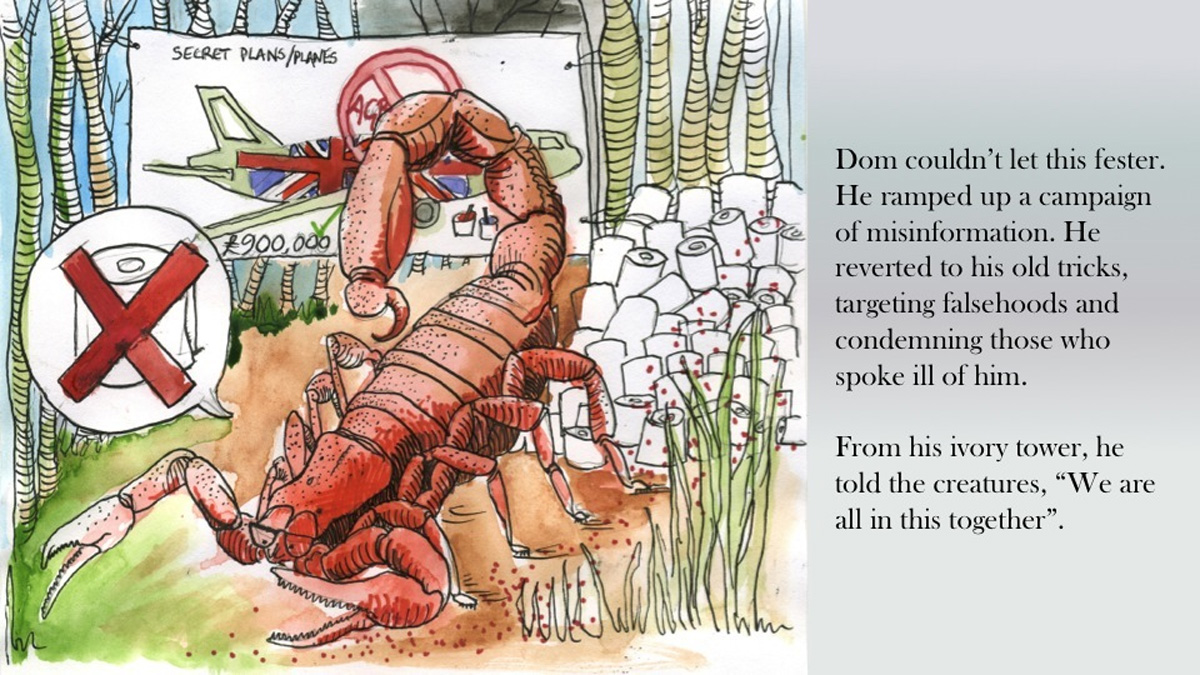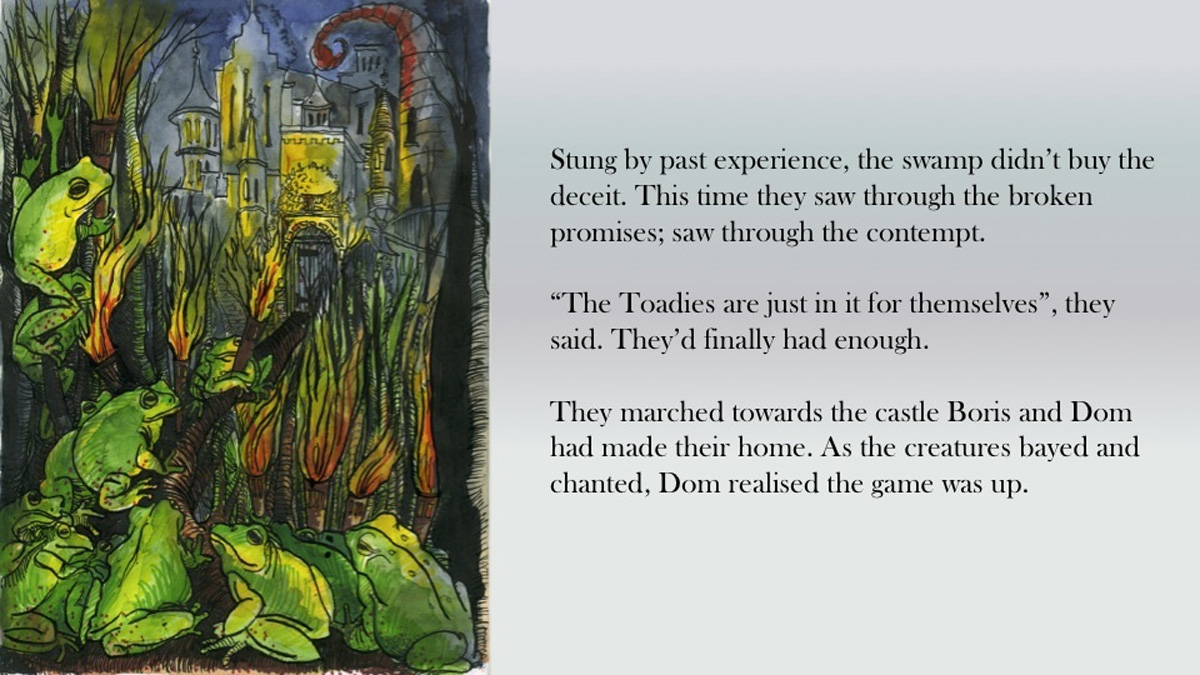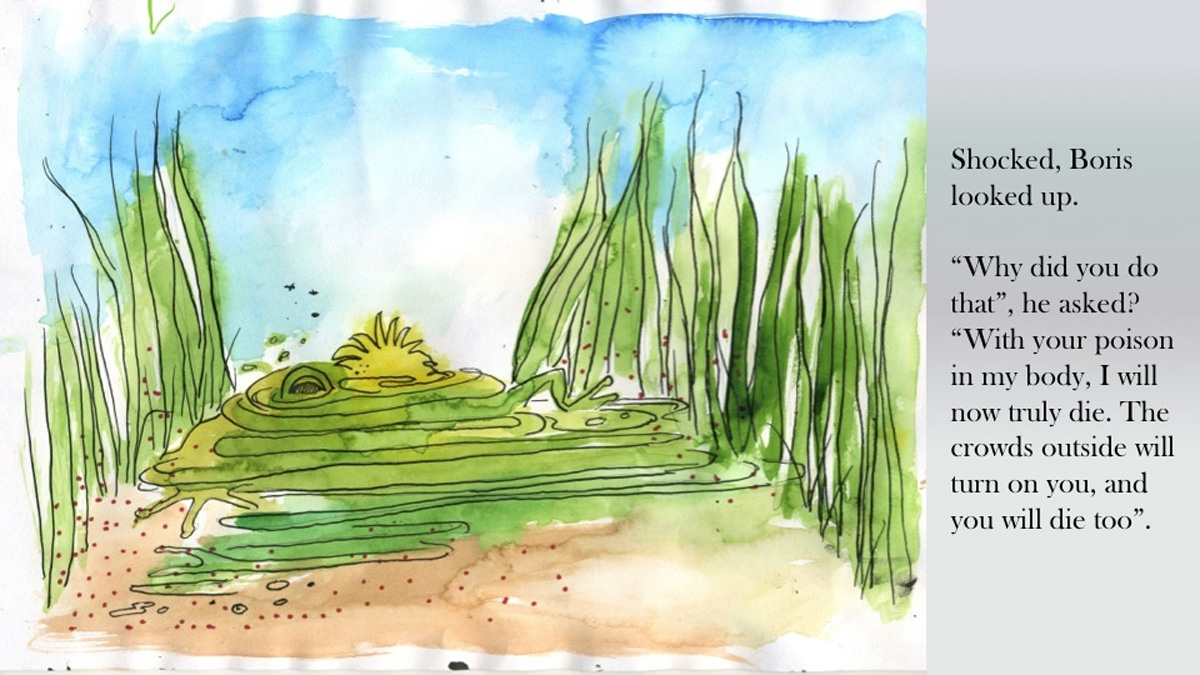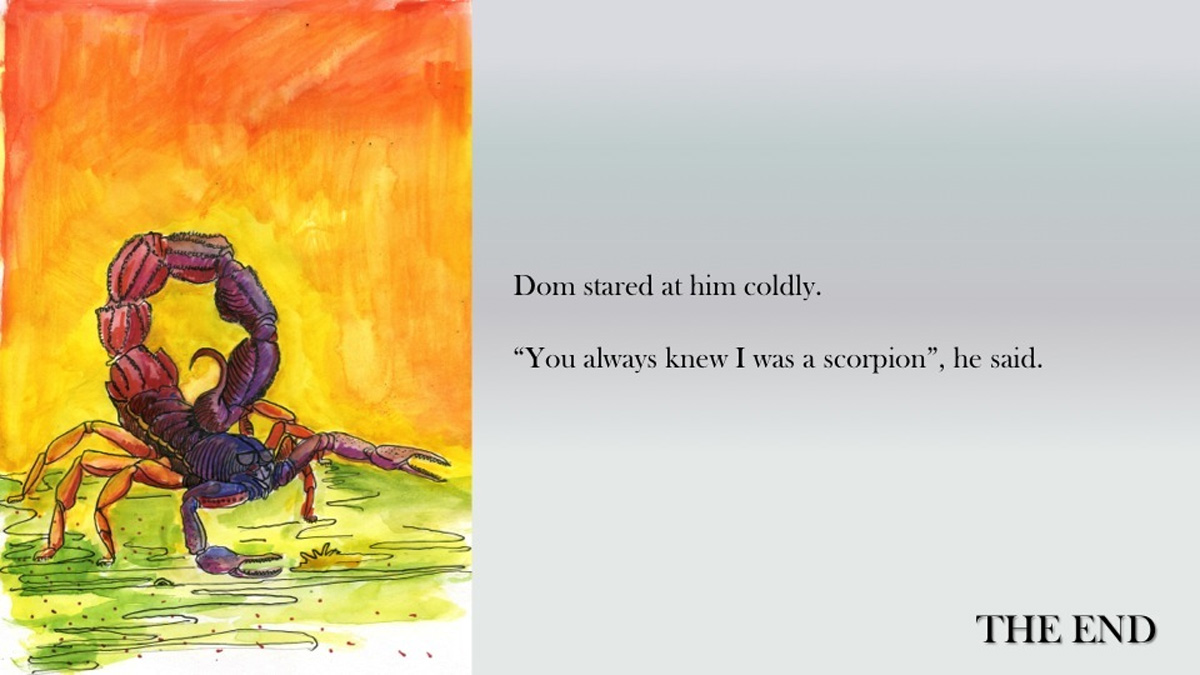Described by Punch magazine as an ‘index of time’ (1988: 1), political cartoons can serve as important historic documents: ‘cartoons can be useful illustrations that catch the eye of the reader, but they are far more valuable as evidence of an important set of dynamic social and political relationships’ (Hiley, N. 2009: 41). Baudelaire saw the cartoon as an art form that could find ‘the fantastic in the real, and conversely depict ‘the reality of the fantastic in contemporary life’ (Hannoosh, M. 1992: 253). In short, cartoons and caricature became an art that represented real life for real people, took the banal and made it interesting, the ugly and made it beautiful and turned the transitory and ephemeral into eternal truths.
In late 2019, the political cartoonist Martin Rowson began a #Draw challenge on Twitter (Rowson 2019). Many cartoonists picked up the gauntlet and a large body of rapid response artworks have been created. This graphic submission includes my own work that was created in response to #DrawTheCoronaVirus in collaboration with The Cartoon Museum in London, United Kingdom. Sisyphus as Keyworker can be seen in an ebook (Rowson, M. 2020: 64) produced by the cartoon museum as a fundraiser and to highlight the plight of the museum during the lockdowns imposed in the UK in 2020.
The second artwork, whilst debuting on Twitter, is as yet unpublished. It is a modernised Aesop fable strip in response to the #DrawBorisJohnson challenge; The Toad and the Scorpion, in collaboration with Paul William Cooper who wrote the words for it. It follows the news events unfolding in the UK during the first lockdown beginning in March 23rd 2020. The artwork mimics the political cartoonist trope of imitation, parody and pastische of existing creations. The Toad and the Scorpion resembles the format of a children’s illustrated book. The simplicity of the text plays to the subversive and ironic nature of the Aesopic tradition which was initially intended for an adult audience. They were originally purposed to provide political criticism in an era of represssion.
Conclusion
The #Draw challenge focused the attention of its participants to create rapid response images to news events as they unfolded at a time when globally the future was unclear. They are an important record of lived experiences of the early days of the coronavirus impacting upon contemporary life. Functioning both as an example of the close relationship between modern life and cartoon art as referred to by Baudelaire, and as described by Punch, they are a fitting testimony of a moment in time.
Author’s Note
Louisa Buck wrote the abstract, introduction and conclusions for this article, and created the artwork and words for Sisyphus as Keyworker and the artwork for The Toad and the Scorpion. Paul William Cooper wrote the words for the Toad and the Scorpion. Sisyphus as Keyworker has been reproduced here with permission of the Cartoon Museum, London. All the artwork included in this article is copyright © 2020 Dr Louisa Buck. All rights reserved.
Editors’ Note
This work is part of the Comics in and of the Moment Special Collection, edited by Jeanette D’Arcy and Kay Sohini with the assistance of Ernesto Priego and Peter Wilkins.
Competing Interests
The author has no competing interests to declare.
References
Gombrich, E. H. 1994. Meditations on a Hobby Horse and Other Essays on the Theory of Art, Phaidon Press.
Hannoosh, M. 1992. Baudelaire and Caricature: From the Comic to an Art of Modernity, Penn State Press.
Hiley, N 2009. ‘Showing Politics to the People: Cartoons, Comics and Satirical Prints’. In: Howells, R. & Matson, R. W. (eds.) Using Visual Evidence. McGraw Hill/Open University Press. Pp. 24–41.
Punch 1988. The Punch Cartoon History of Modern Britain: Punch Cartoons 1841–1987, Punch.
Rowson, M. 2019. #Draw Challenge. Available at https://www.martinrowson.com/draw [Accessed 2 December 2021].
Rowson, M. 2020. ‘#DrawTheCoronavirus: A Cartoon Mini-Challenge from the Mind of Martin Rowson’. In: Stirling-Middleton, E. (ed.). London: The Cartoon Museum.
